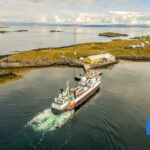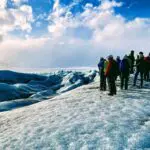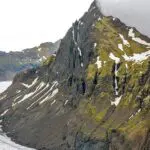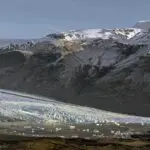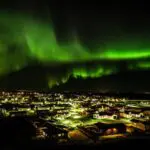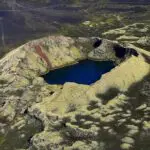There are two popular weather sayings in Iceland:
- If you don’t like the weather, wait five minutes, and it’ll have changed to something else
- There’s no such thing as bad weather, only badly dressed people.
In essence, that explains the weather in Iceland in so many ways. Not that it is always cold and horrible here. Iceland is a windy island with wind speed reaching 40mph (18m/s) on 10-20 days per year in the lowlands of Iceland. That isn’t too bad. The winters are also relatively mild for the latitude, but we can thank the North Atlantic Gyre for that. In return, the summers aren’t mild as well. Average temperatures during the summer months are not high, but 24-hour sunlight makes up for the colder weather.
But what is the weather like in Iceland? Let’s just begin at the beginning of the year! Don’t feel like reading through all the months? Choose the one you want to read about:
The Weather in January
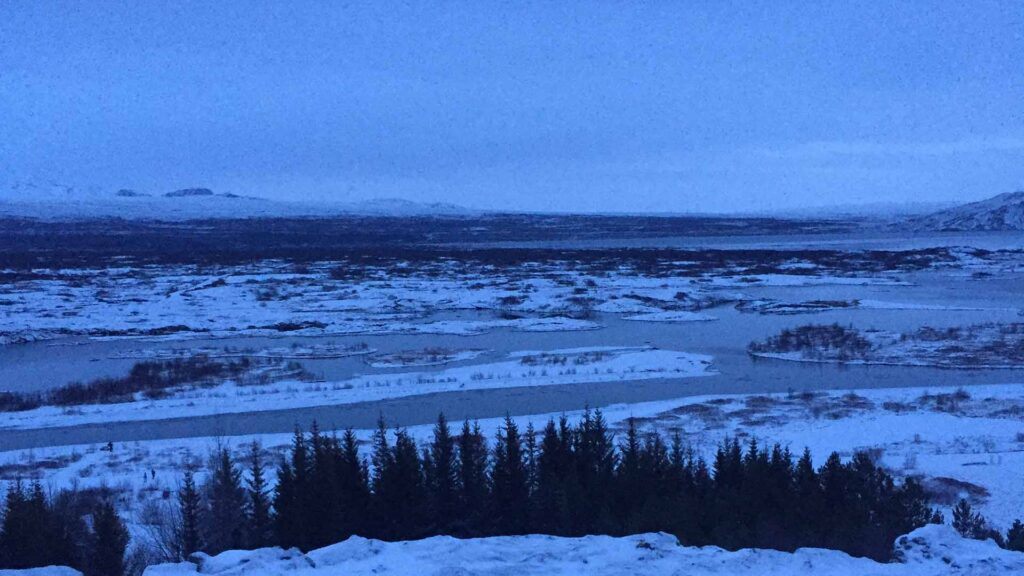
January is the darkest month of the year, despite the days already getting longer.
Christmas and New Year have come and gone, people take down their decorations, and at least two months more of winter is ahead of us.
But that’s not to say it’s all doom and gloom; of course not.
With only about 6 hours of daylight on average in January, there is a greater chance of seeing the famous Northern Lights. But it is cold out in the darkness, and looking for or looking at the lights, means you will spend a lot of time outside. The sun rises at about 10 or 11 in the morning, depending on if it’s at the beginning or end of the month.
Even though the sun is closest to the Earth at the beginning of January, it doesn’t manage to heat up the atmosphere much in Iceland. The average temperatures range from 28.8°F (-1.8°C) to 37°F (3°C), with an average of 7.8″ inches of snowfall overall in the month. As it is one of the year’s darkest months, the mean monthly sunshine hours are only 20. The stereotypical British weather is rain and gloom. Iceland isn’t much different, but we get snow as well. On average, 13.3 days have precipitation (≥1mm) in January.
The lowest ever temperature recorded in Reykjavik was on 10 January 1918, -12.1°F (-24.5°C).
January is also one of those months where storms and strong winds might come your way. But they generally don’t last more than half a day to possibly one whole day. Checking the Icelandic Met Office regularly for weather updates is a good practice.
We’re not joking. The weather changes rapidly here. We do have days where it seems to change every five minutes, but the weather forecast isn’t reliable more than 2-3 days in advance. Sometimes even less, so check regularly.
The Weather in February
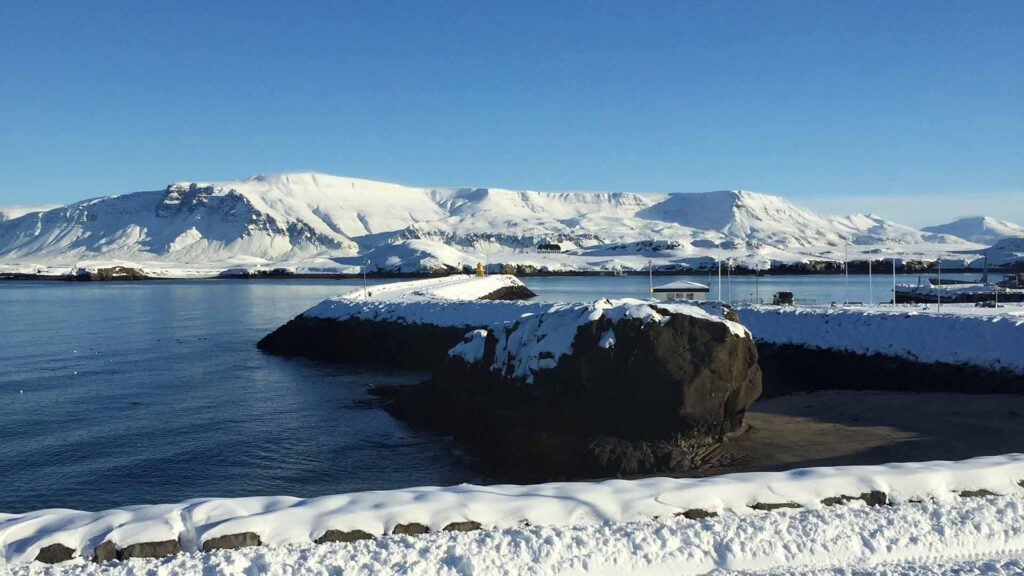
In many ways, this shortest month of the year is just more of the same as January. However, the days are somewhat longer.
January and February are often thought to have the worst weather. Frequent snowstorms and closed roads give it that dubious title.
However, the weather in Iceland is not all doom and gloom. There are plenty of chances to see the Northern Lights, for example. Crisp winter days are among our favourites here at Your Friend In Reykjavik. As February has longer days, they give a bigger chance of beautiful walks.
The average temperature ranges from 28.6°F (-1.9°C) to 39.2°F (3.3°C), with an average of 6.7″ of snowfall overall. February is a considerably brighter month than January, with 60 mean monthly sunshine hours. There are 12.5 precipitation days on average in February.
The Weather in March

For much of the northern hemisphere, spring starts around this time. In Iceland, due to its position on the planet, spring doesn’t begin until April. That’s not to say that winter is still raging in March.
It is one of those months that can have very spring-like weather or more snow. Nothing in between. It is still cold, and with temperatures usually hovering over freezing, the air’s humidity might make it feel colder than it is.
The average temperatures for March range from 29.7°F (-1.3°C) to 39.2°F (4°C), with 109 mean monthly sunshine hours. What might come as a surprise is that the average snowfall for March is 2.5″ more than in February, at 9.1″. But like we said just above, either we get spring weather or more snow. The highest number of precipitation days in a month is in March, with 14.4 days. I guess that’s spring!
Páskahretið – The Easter Cold Spell
The Easter Cold Spell is something Icelanders believe happens before or during every Easter, so we’re always ready for it. But since Easter can land either in late March to late April, it’s hard to determine if they always happen. A meteorologist wrote on the University of Iceland’s Web of Science that those cold spells are common during late winter and spring. Still, they don’t necessarily happen during Easter.
“As Easter falls at different times of each year, weather events can be associated with them for quite some time. From the discussion of the last 40 to 50 years, weather events during a relatively wide period of each year can be called An Easter Cold Spell. If there is no cold spell during the Easter holiday, any cold spell between Palm Sunday to Sunday after Easter can be called Easter Cold Spells. That means the Easter Cold Spell can happen over two weeks.
The weather in Iceland is usually somewhat unstable; it alternates between northern winds with cold and southern winds with warm weather. Sharp windy weather from the north typically happens during the two weeks in and around Easter. But it can also occur every other two-week period during spring.
In the past, people believed there were five to seven spring cold spells, and the Easter Cold Spell was one of them. But the cold spells didn’t happen every year.”
The Weather in April
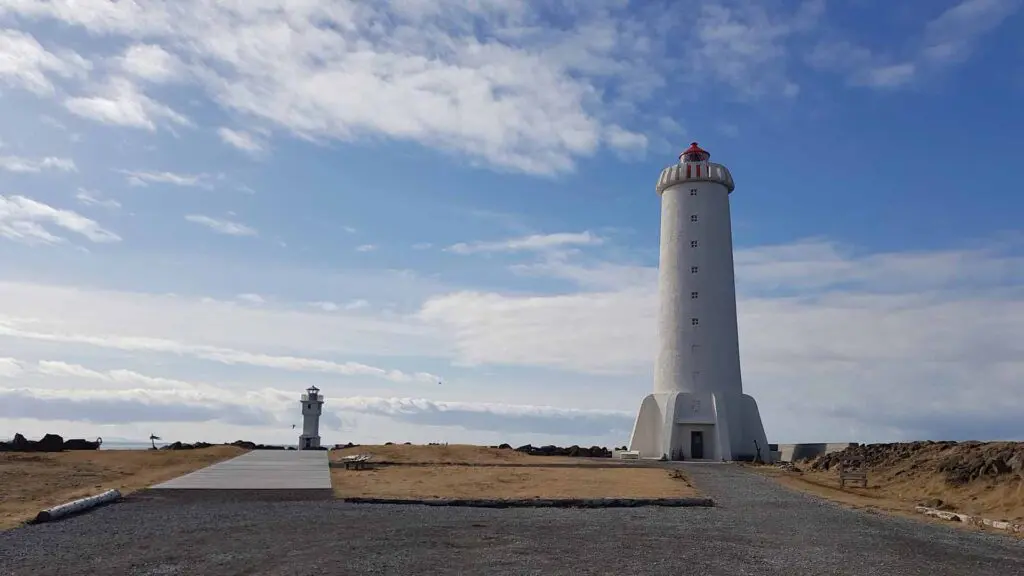
The First Day of Summer is always in April. It is one of a few days we still celebrate, which originate in the old Icelandic calendar. The First Day of Summer is always on a Thursday between the 19th and 25th and is a legal holiday in Iceland.
But as Easter is just as likely to land in April, the ominous páskahret can also rear its cold head.
However, the average temperatures are still going up, and in April, it is 34.2°F (1.2°C) to 44.2°F (6.8°C), and 164 mean monthly sunshine hours. There is, on average, 4.8″ (12.2cm) of snowfall in the month. There are, on average, 12.2 days of precipitation in April. The weather in Iceland is getting better!
First Day of Summer
April is definitely a spring month, despite the First Day of Summer – the Vikings only had two seasons: Winter and Summer.
Northeastern winds are expected during those last 10 days of April and all the way to 10 May or so with high air pressure. It is generally dry and sunny in South Iceland, but it can snow in North Iceland.
In Reykjavik, the highest temperature to have been measured on the First day of Summer was 56.3°F (13.5°C) in 1998 and again in 2004. However, the coldest day was in 1949, when it went down to 16°F (-8.9°C). It is often reasonably sunny on this day but cold.
People believe that if winter and summer freeze together, we’ll have a good summer. However, since 1949, it has only happened 21 times in the capital.
On the other hand, the highest temperature ever has been measured in Iceland on the First Day of Summer was 67.6°F (19.8°C) in Akureyri, 1976.
The Weather in May

Spring is in full swing in May, many highland roads will open, and the days are getting longer. At the end of the month, it’s only three weeks to the longest day of the year!
The average temperature in May is 39°F (3.9°C) to 49.6°F (9.8°C) with 201 mean sunshine hours. In fact, May is generally the month of the year that gets the most sunshine, even if June has longer days. We can still get snow in May as it is Iceland, but it’s only 0.6″ (1.6cm) on average. May has the most sunshine hours, but it also has the fewest precipitation days on average, with only 9.8!
It is becoming really bright, and it doesn’t really get dark from the middle of the month. Around the 20th of the month, the sun rises at 4 in the morning and sets again at 11 in the evening, and it will not become completely dark.
The Weather in June
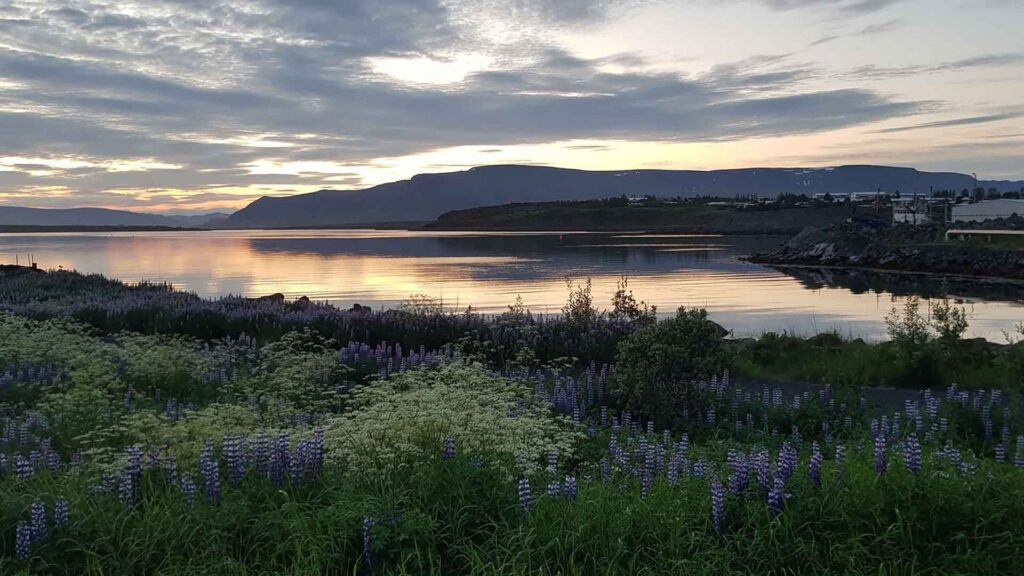
Ah, the first actual summer month in Iceland. Even though May sometimes feels like summer, the collective thought in Iceland is that summer only lasts from the beginning of June to the end of August.
The longest day of the year, the summer solstice is on 21 June. In Reykjavik, the sun actually does set but barely after midnight. Still, then it rises again just before three in the morning. It does not get dark, however. North Iceland is much better to witness the actual midnight sun. On the 21st, the sun rises at half-past 1 in the morning and sets at 1 am. Many feel June has the best weather in Iceland despite it not being the warmest month.
The average temperatures in Reykjavik range from 45.9°F (7.7°C) to 54.9°F (12.7°C), with 174 mean monthly sunshine hours. There are no numbers for the average snowfall in June. If it happens (it’s Iceland, of course, it can happen), it is so rare it doesn’t register on the average scale. There are slightly more precipitation days in June than in May, or 10.7 on average.
The Weather in July
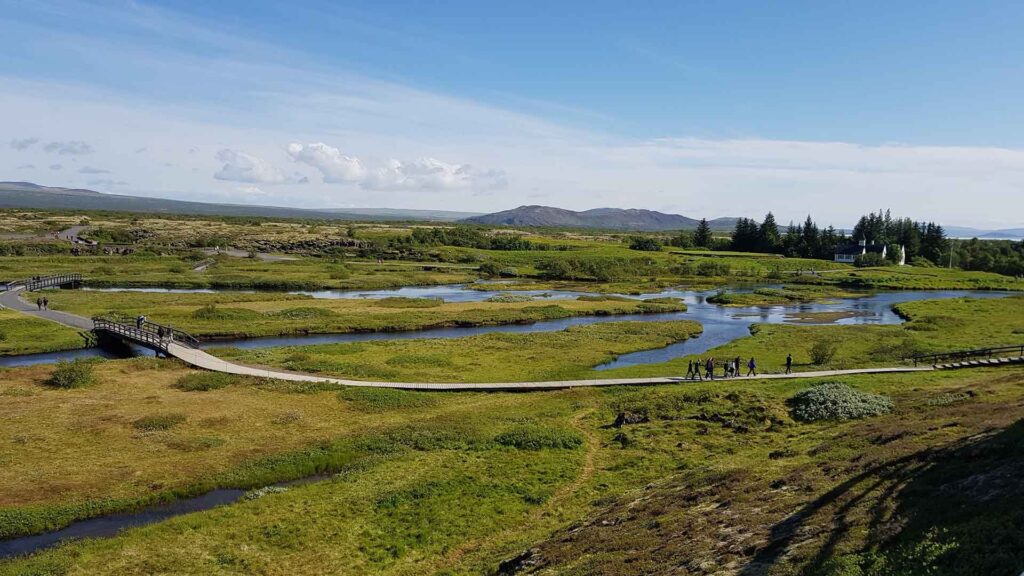
July is generally thought to be the best month of the year. The weather is usually at its best during this time of the year, all roads are open, and most people want to have their summer holidays this month.
The weather can be more “summer-like” in the North and East of Iceland. The summer of 2021 is a good example, where they experienced envy-inducing high temperatures and sun for almost two months. Residents of Reykjavik and the capital area were a bit annoyed by it because the summer in that part of the country was nothing special.
But the average temperatures of July in Reykjavik are 47.8°F (8.8°C) to 58.3°F (14.6°C), and 168 mean monthly sunshine hours. Despite having almost 33 fewer sunshine hours on average than May, July has only slightly more precipitation, with 10 days on average (compared to 9.8 in May). The highest temperature recorded in Reykjavík was on 30 July 2008, at 78.2°F (25.7°C).
July is the height of the tourist season in Iceland, especially since most Icelanders are on holiday too.
The Weather in August
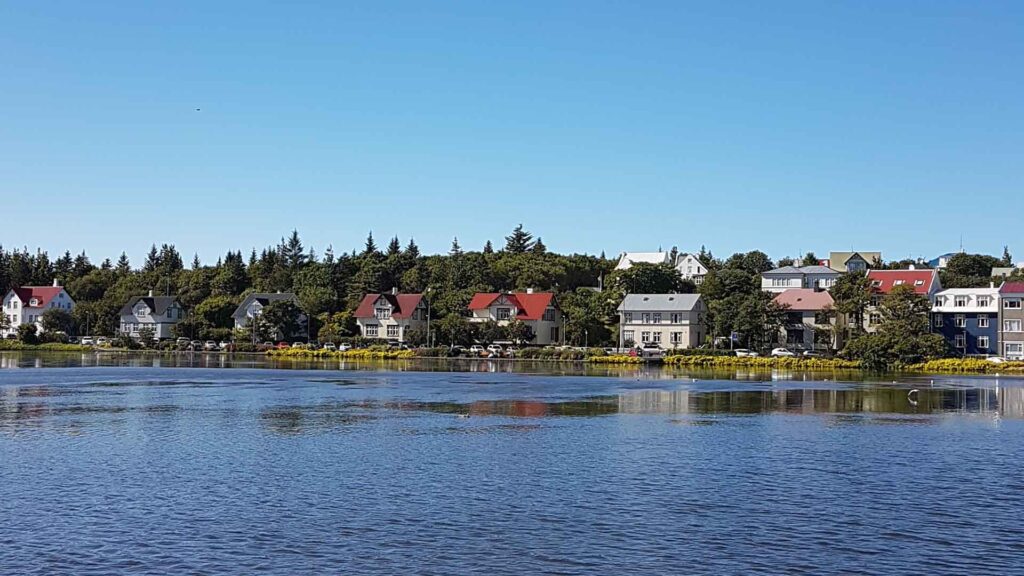
The last summer month. Many feel that autumn starts in the latter half of the month, but we don’t need that kind of negativity in our lives.
What’s great about August is that the nights are becoming dark again, so it is possible to see the Northern Lights from about the middle of the month. You’ll have to be out quite late, but it is possible. Some even say that August and September are the best months to see them. Not because the activity is greater but because you get the best of both worlds, Icelandic summer weather and Northern Lights.
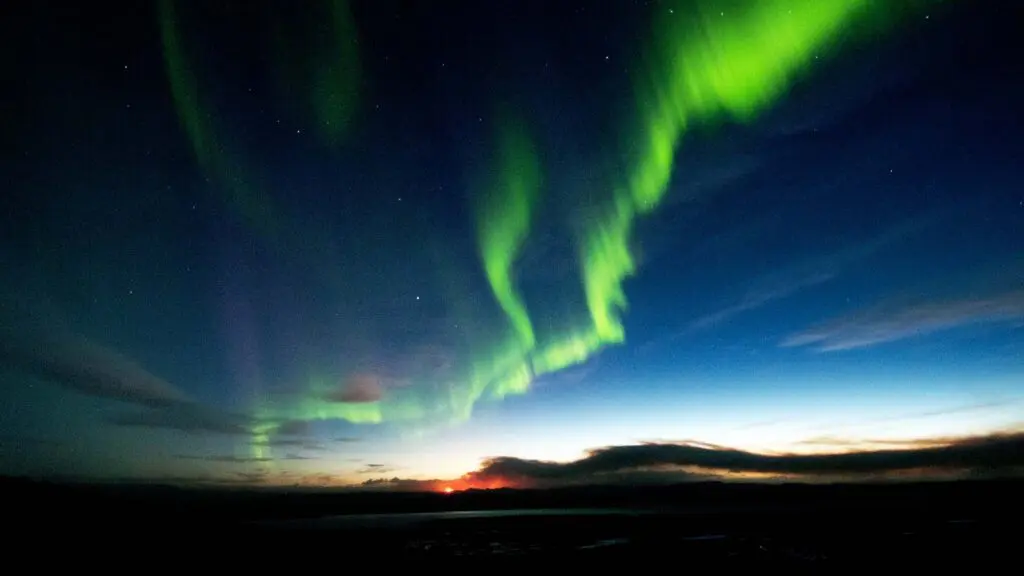
The temperatures are starting to slowly go down again, and the average temperatures for August in Reykjavík are from 47.7°F (8.7°c) to 57°F (13.9°C). August is also one of the four months to not have an average snowfall number (May-September), so that’s good. The mean monthly sunshine hours are 155. The people who believe August to be the beginning of autumn do so, possibly due to the precipitation. Still, there are, on average, 11.7 days with rainfall. There isn’t a lot of rain, though; the average rainfall only measures about 2.65″ (67.3mm) over the whole month.
The Weather in September
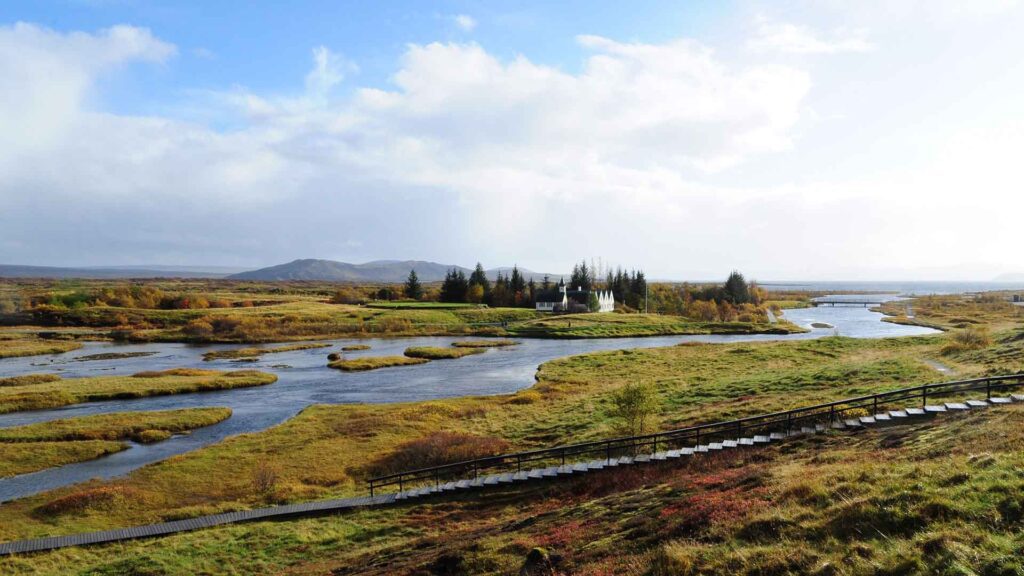
Ok, now we’re definitely heading into autumn with its spectacular colour changes. The weather can be somewhat windy and wet, but it doesn’t (often) snow in September. It can happen, though. We’re not joking when we say the weather in Iceland can be unpredictable!
Most highland roads either have closed or are about to close in September as it will almost definitely snow there.
The temperature drops by a few degrees this month, and it ranges from 42.6°F (5.9°C) to 46.8°F (8.2°C) on average. There are about 35 fewer sunshine hours in September than in August. There are also 12.4 precipitation days on average, almost a day more than in August. It also rains more on average, with an overall average of 2.89″ (73.5mm).
The Autumn Equinox is at the end of September, which means the Earth’s tilt is in the perfect position to see the Northern Lights!
The Weather in October
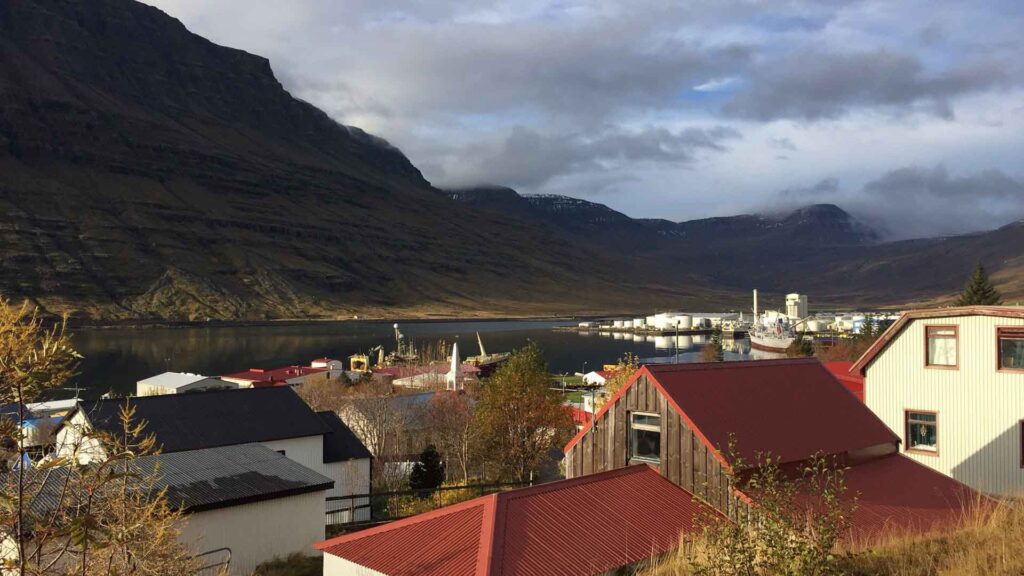
The last Saturday of October is the First Day of Winter. Unlike the First Day of Summer, it is not a legal holiday, and Icelanders often dread it. Not that we hate the winter, of course not, it’s just cold and dark! But October has a lot going for itself. After increasingly darkening days, people are ready for celebrating something, and we have taken up Halloween. The celebrations can be traced back to Norse and Celtic origins.
As it is the first winter month, October generally does see some snowfall but not a lot. On average, there is 0.6″ (1.4cm) of snow and 14.5 days of precipitation. The temperatures range from 36.9°F (2.7) to 45.5°F (7.5), and 93 mean monthly sunshine hours. It can rain a bit as well as snow, so pack accordingly!
It can get pretty windy in October. However, the average wind speed is 12.3 mph (5.5 m/s), so it is relatively calm, despite there might be days when the weather is not ideal. Those days are museum days or food lovers’ tour days.
The Weather in November
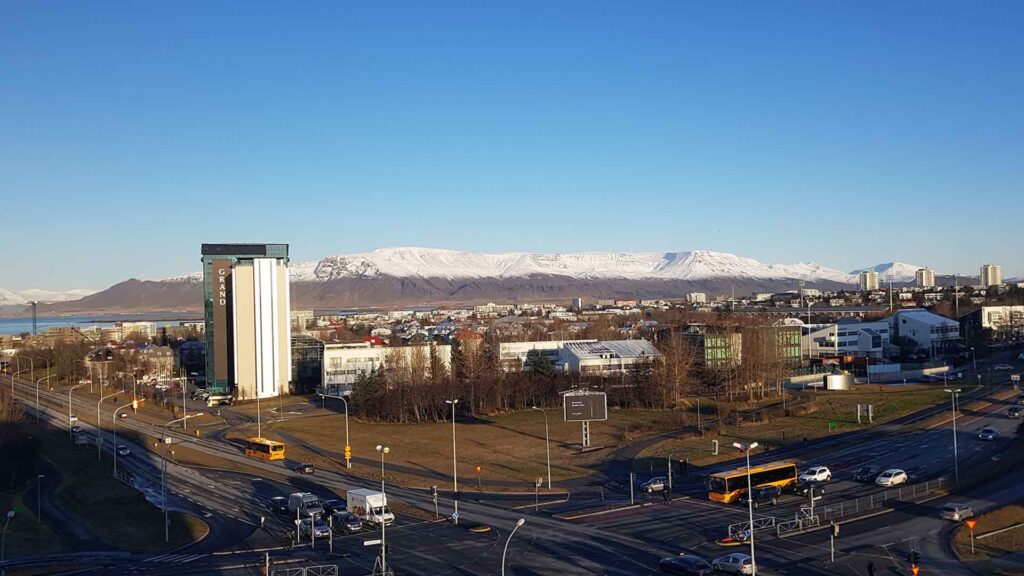
Since Icelanders do not celebrate Thanksgiving, this is just the month where we wait for December and Christmas. Some people put their Christmas decorations up in November, and municipalities put up their Christmas lights. The Icelandic Airwaves music festival is also at the beginning of the month.
It’s great to counteract the increasing darkness. The sun rises between 9:30 and 10:30 and sets again between 16:00 and 17:00, depending on if it is at the beginning or end of the month. In November, the average snowfall is 3.4″ (8.7cm), and there are only 41 mean sunshine hours. The average temperatures range from 31.6°F (-0.2°C) to 36°F (2.2°C). The temperature drop is considerable between October and November. When packing for the Icelandic winter, taking in the possible windchill is important.
The Weather in December
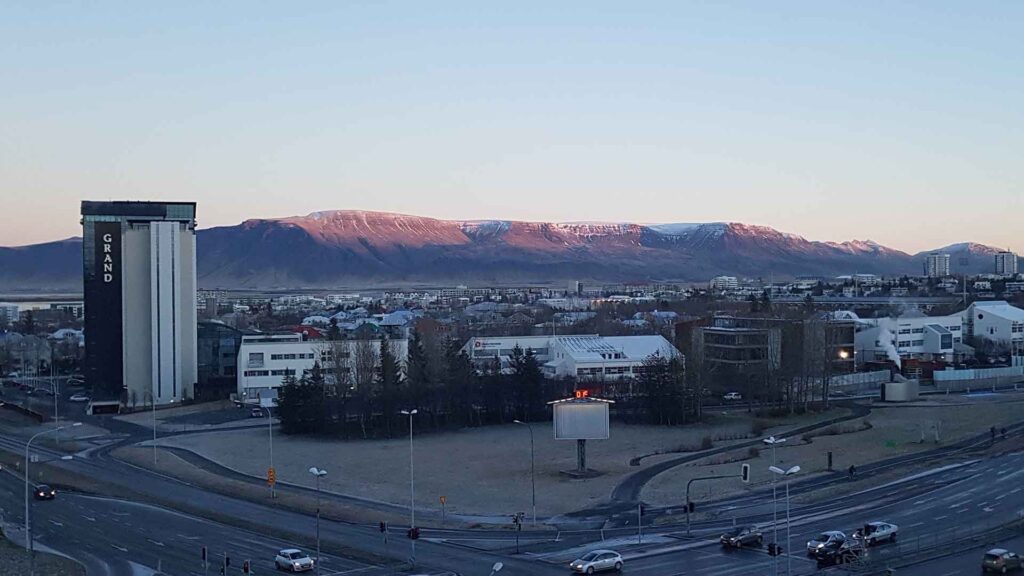
December is the favourite month of many Icelanders. Not necessarily due to the weather but general kindness and bright lights. It is, of course, the month with the shortest day of the year. The Winter Solstice is on 21 December, and the sun rises at 11:21 in the morning and sets again at 15:30 in the afternoon.
It can be difficult to hardly see daylight, but despite having the shortest day of the year, the month isn’t as dark as January. The mean monthly sunshine hours of December are 22 (compared to 20 in January). The average snowfall is 7″ (17.8cm), and the temperatures range from 291°F (-1.6) to 37.9°F (3.3°C). There are, on average, 13.9 precipitation days in December.
The weather is in many ways very similar to January; the difference is the Christmas lights and anticipation for the holidays.
So, that’s the weather in Iceland!
Please signup HERE for our newsletter for more fun facts and information about Iceland!


